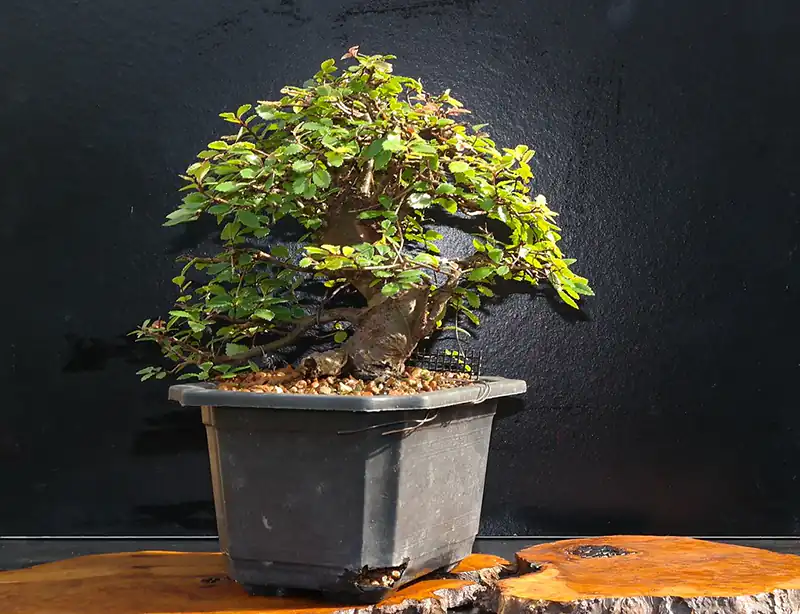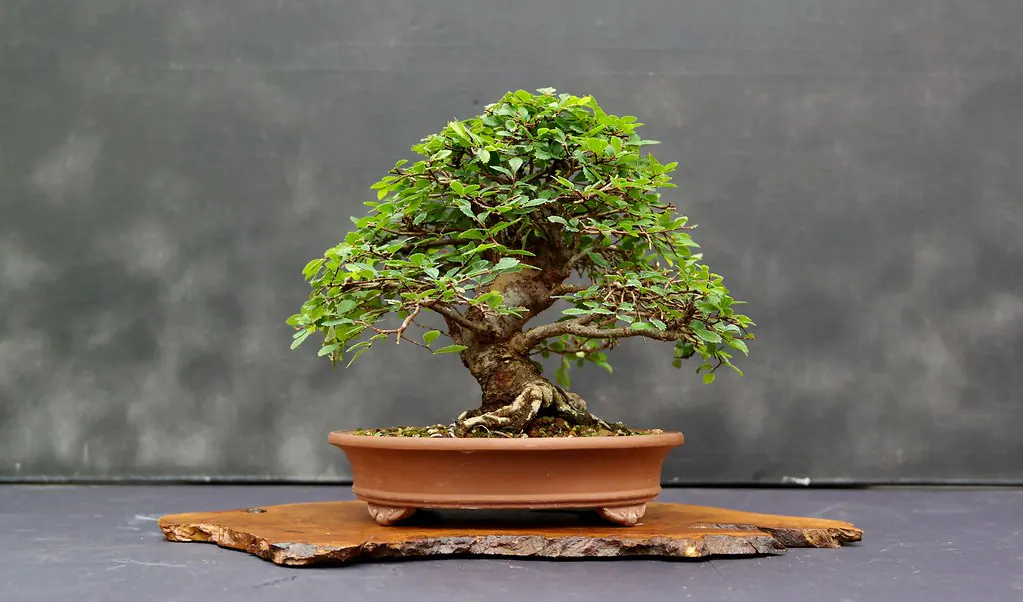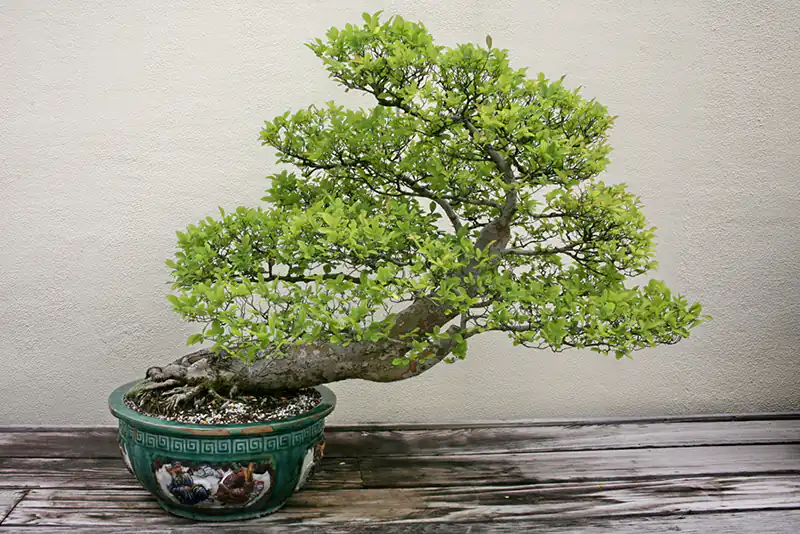One-Stop Guide on Watering a Chinese Elm Bonsai- All You Must Know!
Do you frantically wish to know about the watering and misting of tiny little precious Chinese elm bonsai? Check out the article to engross in every minute detail on watering the elm bonsai.
I still remember the first little Chinese elm bonsai plant gifted to me? It ran a wave of excitement and anxiousness across my nerves as I am a fervent bonsai lover. Chinese Elm Bonsai needs specific watering care so that it shines and grows in full bloom at your place. And don’t worry, you need not be a gardening expert for getting a knack for bonsai watering techniques. So let’s start our analysis on watering specifications for the petite bonsai to keep it in the best condition here forth.
Image courtesy of Picasa 2.7
When to Water Your Chinese Elm Bonsai?
Calculating the exact water proportion for a plant to stay aloof from getting dry or overwatered is trivial. The damp soil is a basic indication that your bonsai gets all the moistness it requires. A moisture-filled bonsai plant is a perfect thing, but how to identify it? An expert trick to do so is to push your finger into the soil, and you can feel the mild moistness in the plant. If there is no sogginess and even foliage appears dry, it’s time to water your Chinese Elm Bonsai.
Even botanical experts suggest that connecting your hearts out to the bonsai can help you understand and assess their requirements. Just like you nurture an infant without any speech conversation, the same goes for this little bonsai plant. The watering of Chinese elm revolves around a host of factors like the size of the plant, pot size, soil mixture, placement, environment, and climatic conditions. Continue below to kneel on exact watering patterns and methodologies for the elm bonsai.
How Often My Chinese Elm Bonsai Needs Watering?
We tend to follow a preset ideology when watering plants, and that’s where we tend to go wrong. Bonsai watering is different from regular plants. It is fragile, stout with tender leaves that could easily be worn out if not appropriately maintained. Expert tactics help analyze the correct watering times for your elm bonsai slated below.
Look Out For Slightly Dry Soil
Check and scrutinize the soil quality to test its succulence. Keep a check on the hydration level of the plant. Insert your finger about 0.4” into the soil to test the moisture. If you identify dryness in the soil, time to water it. The testing starts getting more evident once you get into this daily regime. After some time, you won’t even need to do a finger check for this purpose.
Routine Watering Is A Myth
Do you follow watering your Chinese elm bonsai as a daily ritual? Folks, here you are going all wrong. Daily watering of bonsai does not help you trace the plant’s exact need. Excess watering can again be a significant hindrance to the growth and development of little bonsai.
Utilize Good Soil Mixture
Making use of good quality soil mixture influences the watering requirements of the Chinese elm bonsai. Botanical experts state that elm Bonsai thrives on specific soil mixture components like the pumice, lava rock, and akadama in variable proportions. The Akadama constitutes ½ of the mixture content, with the other two comprising ¼ of the mixture. Using akadama in the compost for potting can also help create a perfect blend of soil mixture of the Chinese bonsai.
Bonsai Watering with Potbound Roots
Chinese elm bonsai has a very mediocre watering requirement owing to which most water flows out of the pot each time you pour it. Elm roots are very compact, and constrained soil mass is incapable of too much water absorption. As a result, repotting the tree is a perfect option in such a scenario for its rejuvenation.
Type of Water
What type of water is apt to water the elm bonsai? Few experts suggest using cold water when soil is bearing the sun heat as it helps soil cool down. In frigid temperatures, use regular or bit warm water to give a soothing effect to chilling leaves. The time of watering entirely depends on soil dampness and the structure of barks, leaves, and plants on the whole.
Steps to Water the Chinese Elm Bonsai
Are you determinant of bringing home a Chinese bonsai? If yes, no need to get paranoid about its watering pattern as the complete guide is now handy to you.
Elm bonsai has a complex and cluttered root system. Hence, it needs slight and regular watering to ensure that the water reaches and swims through the complete root system.
You must keep watering it till the water travels to the bottom drainage pores and starts running out after a while. Repeat the process after some minutes to retrieve the best outcomes.
Another tactic for watering the Chinese elm bonsai is using a spray bottle with fine nozzles for even water dispersion. It helps in allowing the water molecules to touch every pore without letting the soil wash away.
The watering of elm bonsai is also dependent on whether you prefer to keep it indoors or outdoors. Placing this plant in the kitchen sink is a great idea to wash out the water through it.
This helps in flushing off excess water straight to the drainage, and then you can place it back to the spot. Investing in suitable bonsai watering trays can also be a smart move.
Do you wonder what kind of water works best for the health of your bonsai? Nature always beholds the best with itself, and the same goes for the bonsai plants. Rainwater is the ideal form of water to use in your elm bonsai as it’s aloof from any type of added chemicals. However, that’s not available all year round, and your regular tap water could be a great replacement in that case.
Avid bonsai lovers can also go for the Automated Bonsai Watering Systems that provide excellent and controlled water flow. But they are a costlier choice only if you wish to invest in them.
Bonsai Watering Guide for Beginners
I can relate to the gusto and vogue when you first bring home your Chinese elm bonsai. It’s more of a responsibility and self-acclaimed accountability towards the plant that brings positivity and good fortune as per many beliefs. Beginners can also complete an elm bonsai guide for a broader spectrum on the care and maintenance of the Chinese elm bonsai.
Bonsai plants believe in free-living, and they do not bind you under a routine of watering. Fair misting, spraying, and regular soil check are perfect ways to nurture and cuddle the new bonsai pie at your place. Especially if you have decided to keep elm bonsai indoors, it is crucial to prevent it from underwatering or overwatering at any given time.
I shower water on my Chinese Elm daily during the growing seasons and every 2-3 days during winters. Watering is the crux of an alive and healthy bonsai plant. Neglecting the watering could lead you to serious repercussions like root rotting or browned foliage. Know your elm, and they’d be friends with you soon!
Let’s now delve into Chinese Elm Bonsai’s other faulty watering methods.
Under-Watering
Lack of knowledge about timely watering into your Bonsai plant leads to its under-watering. Chinese elm is equipped with good tolerance towards the under-watering of the plant. Elm Bonsai has a delicate structure and, therefore, could sustain it if you sparingly water it out.
Perhaps, continued under-watering of bonsai elm for a longer period could lead to further difficulties. Yellow or brown leaves are shedding off, or crispness and peeling barks indicate the bad health of this plant. Reviving the health of your elm bonsai is possible only when you start with a regular watering regime for it.
Over-watering
Another primary concern for tender Chinese elm plants is over-watering. Many owners prove incompetent to decide the maximum plant capacity to hold water. Again, watering moist soil would become a perfect breeding ground to deal with pests and infections. The next tip is your plant roots require oxygen to breathe out. Too much moistness leads to oxygen starvation, and they die off. Preventing them from rotting is possible only when you bring them out of damp conditions and restrict water into them.
Image courtesy of Jerry Norbury
What Does Chinese Elm Bonsai Immersion Watering Mean?
What if you are rolling out for a vacay and relying on your casual friends for elm bonsai watering? No watering could make your bonsai look pale and dull for a certain period. Then how to bring back life to it? Immersion watering is another expert answer to it. Dipping the entire pot into a bowl of water until its 1-inch tip of the trunk immerses inside can help hydrate the bonsai. Keep the pot immersed until there is no bubble popping up over. It doesn’t work much for you; it’s time for repotting into the large pot.
Another way to keep the Chinese elm bonsai moist when you are a few weeks away is installing a slow drip. It can accurately extract minimal water amounts to keep your plant in good condition and secure a channel of water release for the continuous cycle.
Seasonal Watering of Chinese Elm Bonsai
Summer/Spring- This is the growing season, and if you wish your plant to grow and blossom, regular watering is the ideal thing to do. If you have repotted, wired, or pinched the plant, exceed the water amounts.
Winter/ Autumn
Cool winds and breezy climate alarm you to cut down on watering for the Chinese elm bonsai plants. Keeping a check on the location of your plants and watering it every 2-3 days is an apt thing to do. Dry air prompts you to mist-spray the plant regularly. Ensure an average humidity for your plant so that it grows well.
Five Prominent Signs of Excessive Elm Bonsai Watering
- Very Damp soil
- Shedding leaves
- Mold in base
- Crisp brown leaves
- Root Rotting
Five Prominent Signs of Underwatering the Chinese Elm Bonsai
- Hard Soil
- Brittles leaves
- Peeling barks
- Dry roots
- Absence of new growth
Misting Your Chinese Elm Bonsai
The epic mystery of apt watering for elm bonsai solves best with the misting techniques. It works incredibly, whether you locate the plants outside or inside. Bonsai lovers like me have been using the misting pattern for years to maintain an equilibrium of moistness in the plant. It helps in retaining the apt humidity levels of the plant. Create the proper ventilation and water drainage channel for the extra water to either run away or evaporate from the plant. Misting or fine water spraying locks moisture into every single soil pore, adding more beauty and grace to your little beauty! Image courtesy of Jerry Norbury
Image courtesy of Jerry Norbury
Takeaway
We wrap up our insights and findings on the watering of the Chinese elm bonsai and how it facilitates the proper care and maintenance of the wonder plant. Remember that elm bonsai is a very low-maintenance plant, but it needs proper attention and showers of your love. It is suggestive of trying for yourself the precise watering mannerisms on your Chinese elm bonsai to figure out the right ways. Beginners might need some time to grasp the proper watering ways but eventually get the hang of the right techniques and manage it swiftly.
Do share your opinions or suggestions on adding value to the watering techniques for Chinese elm bonsai. Follow us for more bonsai insights, and don’t be surprised if your little elm thrives and shines for years without any aging signs or flaws!








